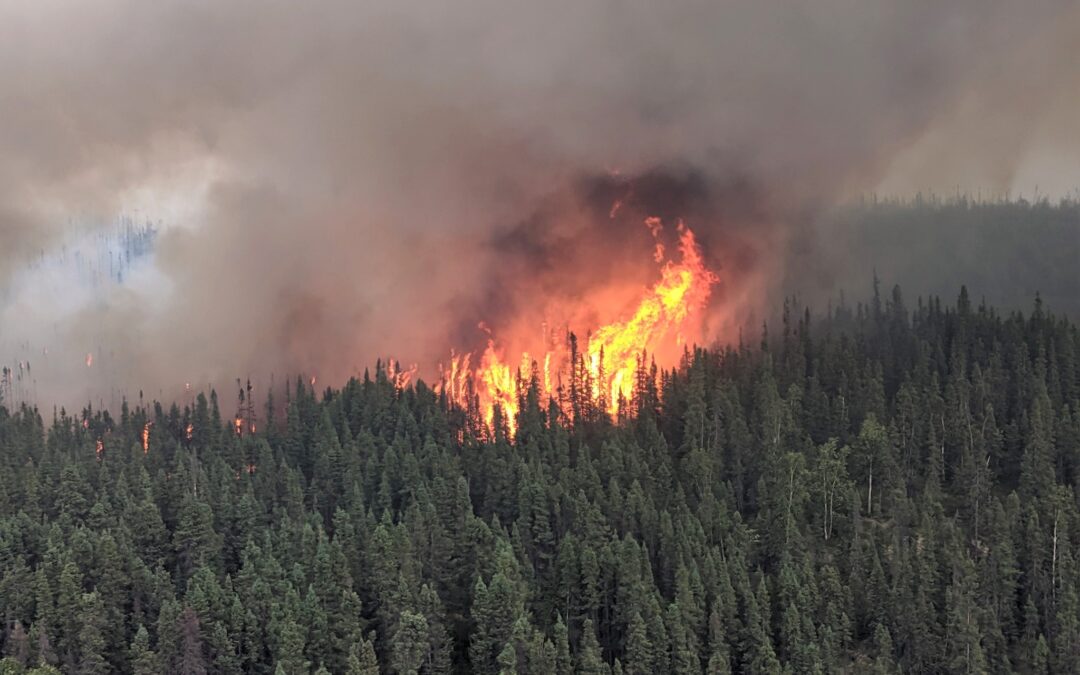Images of densely-packed forests engulfed in raging flames are often associated with wildfires, but the cause of many evacuations in northern Saskatchewan is less dramatic.
Fond Du Lac, along Lake Athabasca in northern Saskatchewan, is the latest community to face a possible evacuation as a result of fire smoke. Upwards of eight communities — including Buffalo Narrows, Ile a la Crosse, La Ronge and Denare Beach — have been evacuated so far this year, typically due to smoke and factors such as limited health facilities for emergencies.
Being moved from home communities, the possibility of an evacuation, and even time spent worrying about the how and why of wildfires can be major causes of stress, experts say. The Saskatchewan Public Safety Agency informs communities about the state of nearby fires, and any decision to stay or go is ultimately up to the chief and council.
“You’re on a fine line of ‘yes we move them out’ or ‘no we don’t,’ ” said Cliff Buettner, director of forest and emergency protective services with Prince Albert Grand Council.
“They can’t just jump into a vehicle and drive out of town.”
In Fond Du Lac, about 130 people are identified as priority individuals with respiratory or other health vulnerabilities who would have to be relocated. That brings logistical hurdles such as transportation and housing.
“As much as we would evacuate when required, in many cases it is better to keep them in the community where they are not exposed to the trauma of being evacuated,” Buettner said.
In the boreal plains of Saskatchewan, most fires are believed to be caused by lightning striking an increasingly dried forest, exhausted from heat and more susceptible to fire.
“All forest fires are subject to disturbances,” said University of Regina biology professor Mark Vanderwell, whose research has been based on forest dynamics and global change.
“It’s expected that a forest will go through these transitions where they are burned by a fire.”
After a fire, a new forest stand is established when a community of trees is formed with a uniform composition in structure, age, condition and spatial arrangement.
“It will age through time, the habitat will change over time, so there are different communities that develop as a result of that,” he said.
The number of fires has increased as a result of climate change, Vanderwell added.
The rate at which wildfires have been increasing has contributed to increased climate anxieties — also known as eco-anxiety, a chronic state of distress over the ongoing effects of climate change. Its effects include a sense of helplessness, loss, frustration and depression.
People living in extreme weather regions are particularly susceptible, including Indigenous people, older adults, people experiencing housing instability or food insecurity. Young people have also been deemed susceptible as they’ve been unable to plan for the future given extreme trends and changes.
There are some simple actions people can take to reduce individual anxieties, University of British Columbia psychiatry and psychology professor Steven Taylor said.
“It doesn’t have to be anything heroic. Never underestimate the power of small things, especially at a collective level.”
Avoiding extreme thoughts leads to a reduction of panic, denial and avoidance, Taylor said. Another recommendation is connecting with others to do things like gardening, recycling projects and neighbourhood cleanups. Reaching out to friends and family to discuss anxieties, or speaking with a mental health care professional, is also recommended.
“Remember,” Taylor said, “you’re not facing this huge global problem all by yourself.”
